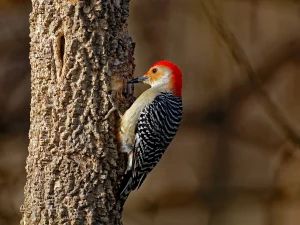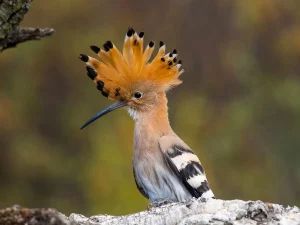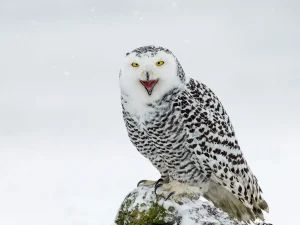Birds’ Communication
Birds are remarkable communicators, using a combination of vocalizations, body language, and visual displays to convey messages to one another. Their ability to communicate is vital for various purposes, including attracting mates, warning of danger, maintaining social bonds, and establishing territories.
Vocal communication is a primary method used by birds to convey messages. Songs and calls are the two main types of vocalizations. Songs are typically used for courtship and mating, with each species having its unique melodic repertoire. They can indicate the health and genetic fitness of the singing bird, playing a role in mate selection. Calls, on the other hand, serve different functions such as contact calls for staying in touch, alarm calls to warn of threats, and distress calls to signal danger.
Birds also employ non-vocal sounds as part of their communication. Woodpeckers drum on resonant objects, owls snap their bills, and pigeons and owls use wing clapping to communicate alarm or display to potential mates.
Visual communication is another essential aspect of bird communication. Birds use movements, gestures, and displays to convey messages. Head movements, wing movements, crouching, raising feathers and crests, and various body postures can communicate dominance, submission, or territorial aggression. Complex visual displays are often seen during courtship, where male birds showcase their attractive features to impress potential mates.
While birds primarily communicate within their own species, there are instances when they communicate with other species, particularly when there is a threat. Birds can produce alarm calls and engage in visual displays to alert other species about potential dangers, forming a cooperative network of communication.
Birds communicate over long distances through their vocalizations, allowing them to stay connected without visual contact. The distance their calls can carry depends on various factors such as frequency, volume, weather conditions, and the environment.
Birds also communicate with humans, particularly pet birds, which can develop their unique ways of communicating through vocalizations and visual cues. In some cases, certain species of wild birds, like the Greater Honeyguide, have been observed to communicate with humans to guide them to food sources.
Bird communication extends to parent-offspring interactions as well. While parents do not communicate with their babies in obvious ways, baby birds use vocalizations and visual cues such as brightly colored mouths to signal their hunger and encourage their parents to feed them.
In conclusion, birds have a remarkable repertoire of communication methods, including vocalizations, body language, and visual displays. Their ability to convey messages to one another is crucial for various aspects of their lives, from reproduction to social interaction and survival. The intricate and diverse world of bird communication is a testament to the complexity and beauty of the avian kingdom.
Hits: 0












